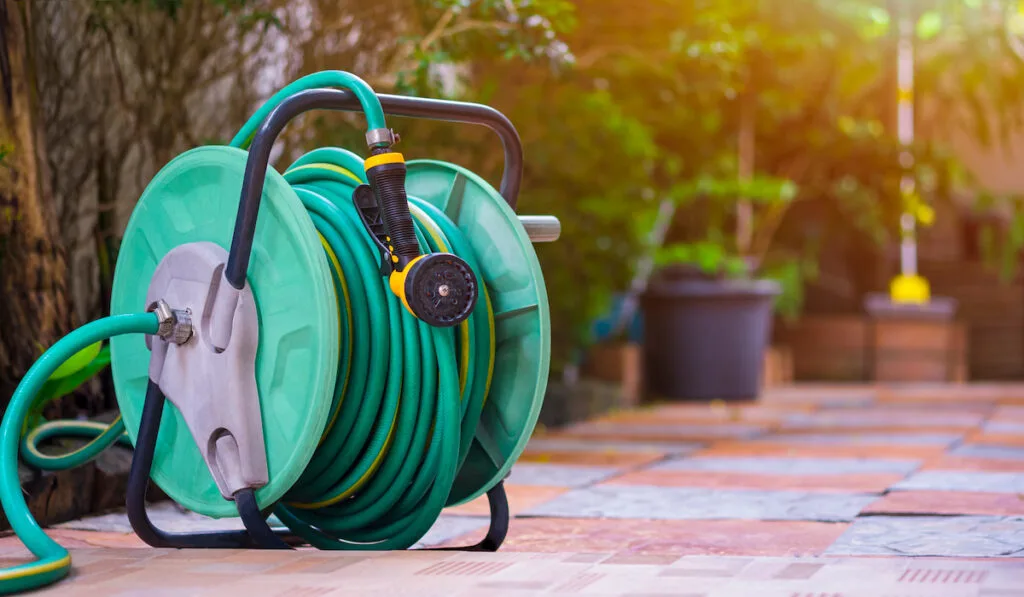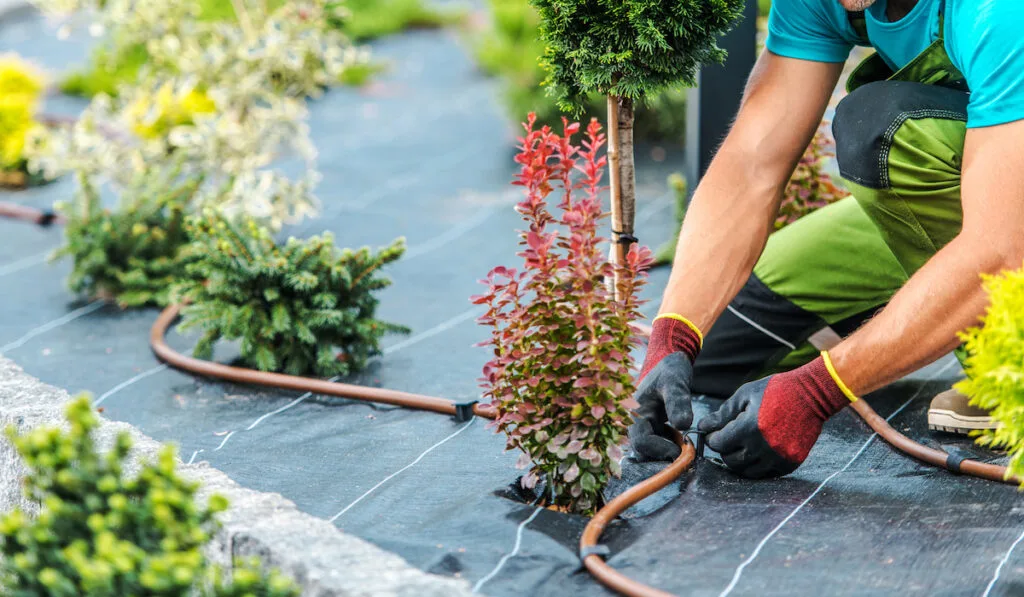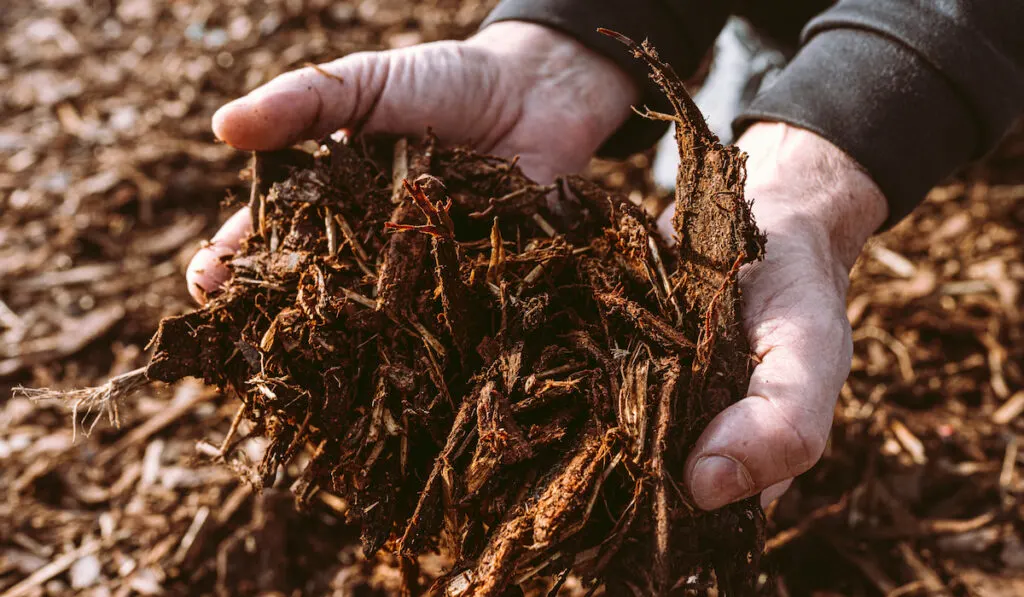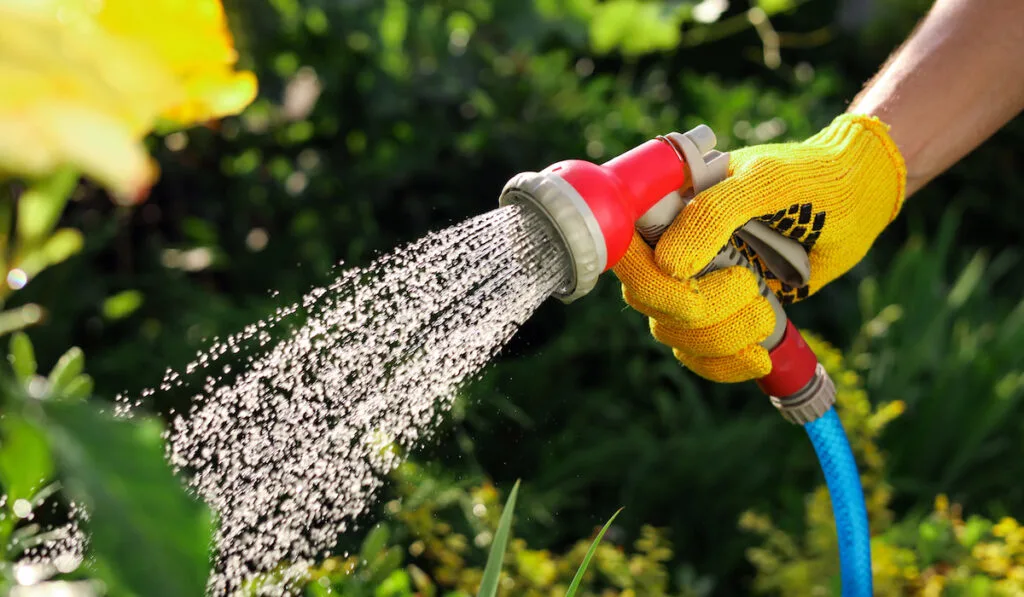Growing vegetables in raised beds is a bit different from growing vegetables in in-ground beds. One major challenge raised bed gardeners have is watering their crops.
Most times, gardeners do now know how often they should water their raised bed crops. Raised beds appear to have better water drainage and more resistance to weeds and pests.
But what techniques are available to properly water your raised beds? When should you water your raised bed crops?

How do you water crops in a raised bed?
Just like in-ground beds, you can water raised beds using watering cans, garden hoses, drip lines, or sprinklers. Whatever the technique used to water your raised bed crops, you should take note of the water needs of your crops and how quickly water drains out of the bed.
How can you check the water drainage quality of your raised bed? What are the water needs of some crops? Are you overwatering or underwatering your crops?
Review our definitive guide to properly watering your raised bed garden.
Table of Contents
Different Techniques to Water Raised Bed Garden
Did you know there are different ways you can water crops in raised beds to affect their growth? Each watering technique has its own benefits and challenges that can also vary depending on your crops.
Manual Watering
This is the easiest and cheapest method of watering your raised bed garden crops. You can pour water with a small bowl over your plants and use your hand to break the force of water. You can also use a watering can with a sprinkle nozzle.
While you can easily measure how much water you give to your plants with manual watering, this method is time and energy consuming. And since manual watering requires personal effort, you may have to change your schedule, wake early, or make other accommodations to water you plants when it best suits them.
Garden Hoses

You can always use a garden hose instead of a watering container. If your plants are young and tender, do not point the hose directly at them.
Remember to use a hose with a perforated nozzle and use a more gentle, lower pressure setting so that you do not damage your plants with strong water pressure.
You can also place the hose on the dirt and allow it to drains water into the raised bed.
Sprinklers
Sprinklers are easy and fun to use in raised bed gardens. Sprinklers distribute a uniform amount of water to crops around them.
Remember to position your sprinklers so that every plant can receive an even amount of water.
Water from sprinklers should reach both the leaves and the roots or base of the plants for your raised bed crops. You can use more than one sprinkler in your raised bed garden to ensure even watering.
Drip Lines
Drip lines are great for raised beds because they do not just water plants. They can also be used to create divisions in the raised bed or give your planting area more shape and definition.

Drip lines provide slow even amounts of water with very low pressure through holes placed throughout the hose line.
Place the drip line close to your plants so water can saturate the soil and reach their lower roots, which can be up to 12 inches deep. You should continuously use drip lines for 15-30 minutes per watering session.
Be careful not to overwater your plants when using drip lines. Since they provide continuous water in small amounts, it can be hard to see whether the plants are receiving too much water.
Furrows
Furrows are long trenches dug in the ground to plant on or used to water crops around them.
If you are looking to make gardening easier on yourself, you can dig a furrow in your raised bed that connects all of the plants.
When you pour water on an elevated part of the furrow, the water will through the dug-out channels to other parts of the garden. This brings water to all of the plants in the raised bed from a centralized location.
When to Water Raised Beds
Depending on your specific plants, the preferred timing for watering raised beds is either early in the morning or late in the evening.
Watering plans in full sun is not recommended. Keep this in mind when watering with automatic systems such as sprinklers or drip lines, and consider using a timer to regulate this.
Early Morning Watering

You should water crops early in the morning because plants take up more water as soon as the sun rises.
It is also recommended to water plants early in the morning because the atmospheric temperature and temperature of the water are somewhat similar at that time of day.
This way, your plants will not be shocked when you water them.
Late Evening Watering
Plants consume more water during the heat of the day when sunlight causes drying. Throughout the day, plants collect water from the ground, and then the water escapes through the leaves (a process called transpiration) with the help of the sun.
At night, plants convert the energy from the sun and water to consume nutrients. When the temperature is cool and stable at night, plants use osmosis to collect nutrients from the ground.
Without water in the soil, plants cannot collect as many nutrients as they should. Always make sure that the ground is not fully dry at night.
Avoid Midday Watering
Unless you are regularly watering your plants more than three times daily or you are using sprinklers, drip lines, or other automated methods, you should not water your plants during the midday especially on a sunny afternoon.
If you are watering your plants just once per day, you should not water them when they are exposed to full sun. The water will easily get lost to evaporation before it has a chance to sink into the soil.

If the air temperature or heat from the sun is strong, your plants will be shocked by the difference in temperature between cool or cold water and the atmospheric temperature.
If you must water your plants in the afternoon or in full sun, use sprinklers, drip lines, or regularly water your plants to maintain even soil moisture.
How Often Should You Water a Raised Bed Garden?
Watering frequency is an important factor when maintaining a raised bed garden. When choosing how often to water your plants, consider these factors:
- Region: If you live in a dry region, you will need to water your raised bed as often as possible to keep the soil moist. If you live in a rainy region, you will have to water your raised bed less often.
- Season: In dry seasons like summer, you should water your raised beds regularly. In the fall, you should consider the rain while watering your raised bed to avoid overwatering.
- Plants: The plants in your raised bed determine how often you should water them. Plants such as tomatoes and cucumbers require more water than root vegetables such as potatoes and radishes.
- Water Drainage Quality: If your raised bed drains water easily, you will need to water it more often. Never allow the soil to become fully dry.
How to Improve Water Retention and Drainage for Raised Bed Garden
Understanding and improving the water drainage for your raised bed can also affect how often you will need to water your plants.
Here are important considerations when looking to improve the water retention or drainage of your raised bed garden.
Improving Water Retention
Ideally, raised bed gardens drain water easily. To increase water retention, considering using these garden materials:

- Mulch: When you mulch, water lost by evaporation will be greatly reduced since mulch blocks sunlight from reaching the soil. Mulching also prevents weed from growing in the raised bed garden.
- Liners: Liners such as newspapers, cardboards, weed fabrics, and plastics can inhibit water drainage since water cannot pass easily (or at all) through the liner. If you use a liner, you should water less often to avoid overwatering your raised bed garden.
Improving Water Drainage
If your raised bed garden is holding on to too much water, you may want to try some of these methods to improve drainage.
- Add rock layers under the soil: If you place rocks under the soil, the water will drain faster. When setting up your raised bed, you can place rocks on the ground before you pour soil above them for your plants.
- Add more plants: The more crops you plant in your raised bed, the more water is consumed. You can reduce the amount of water that stays in your raised bed by growing more crops.
Signs of Improper Watering in a Raised Bed Garden
Overwatering
If you are overwatering your raised bed, you will see signs in your garden including:

- Growth of algae
- Soil that remains soggy
- Root rot
- Stunted plant growth
- Plant leaves with dark brown tips
- Plats with fully wilted, brown, or fallen leaves
Underwatering
You can tell that your raised bed garden is not being watered as often as needed if you notice any of the following:
- Soil gets dry quickly
- Stunted plant growth
- Plants with green leaves turning yellow
- Plants with dry wilting of leaves, stem, and roots
Different Garden Plants and Their Water Needs
The table below highlights a list of common garden plants that you may consider for your raised bed garden and how much water they typically need to remain healthy.
| Crop | Water Requirement Per Week (in Gallons) | Watering Tips and Recommendations |
| Peas | Two | They need more water during their flowering and fruiting stages. |
| Beets | One (early stage), two (later stages) | Water the plants before the soil is fully dry. |
| Beans | Two | They need more water during their flowering and fruiting stages. |
| Celery | Two | Water the plants frequently and maintain evenly moist soil. |
| Onions | Half to one | Water the plants less frequently as they mature. |
| Carrots | One (early stage), two (later stages) | Water the plants before the soil is fully dry. |
| Broccoli | One to one and half | Water the plants frequently and maintain evenly moist soil. |
| Cabbage | Two | Water often and always, especially in dry regions or seasons. |
| Radishes | Two | Water to maintain consistent soil moisture for rapid growth. |
| Potatoes | Two | They need more water during their tuber formation stage. |
| Tomatoes | One | Tomatoes need consistent watering in well-drained soil |
| Cucumber | One | They need more water during flowering and fruiting stages. |
| Cauliflower | Two | Water often and always, especially in dry regions or seasons. |
| Brussels Sprout | One to one and half | Water the plants frequently and maintain evenly moist soil. |
| Lettuce/spinach | Two | Water often and always, especially in dry regions or seasons. |
(Source)
Final Thoughts
Ensuring proper watering for raised bed gardens requires understanding your plants, considering the time of day, and checking for proper drainage. Remember that the seasons and the weather can impact when and how often to water your garden.
What are your plans for your raised bed garden? Are you planning to make changes to improve how your raised bed drains water? Share your thoughts in the comments section below.
Sources
- https://homeguides.sfgate.com/water-12inch-raised-vegetable-beds-35252.html
- https://growinginthegarden.com/best-way-to-water-raised-bed-gardens/
- https://www.dummies.com/home-garden/gardening/vegetable-gardening/watering-systems-for-your-vegetable-garden/
- https://slickgarden.com/how-often-should-i-water-a-raised-vegetable-garden-dos-and-donts/
